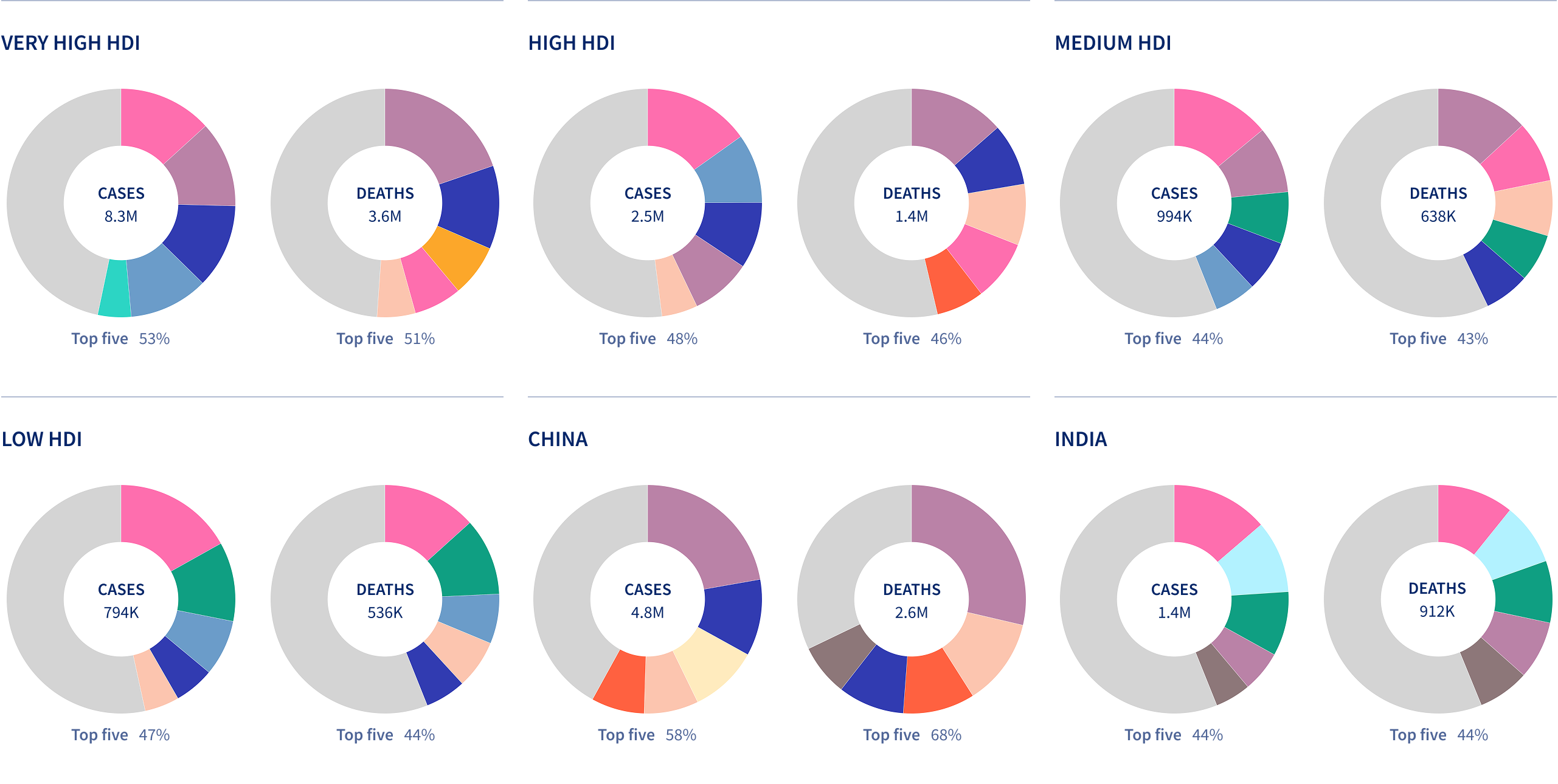Human Development Index
The scale and profile of cancer continue to evolve as countries undergo major transitions in human development.
The Human Development Index (HDI) is a summary measure of average achievement in countries based on national levels of educational attainment, life expectancy, and income. Map 20.1 displays the four tiers of HDI for the year of 2021. By examining cancer through the lens of human development, we can assess cancer transitions and cancer inequalities that are of direct relevance to setting cancer-control priorities.
Figure 20.1 shows the most frequent forms of cancer incidence and mortality by the four-tier HDI and for the vast populations of China and India. Cancer is complex, with 13 different cancer types ranking among the top five across the four broad regions (excluding China and India), as well as in China and India individually. The profiles can be viewed as a snapshot of the impact of changes in lifestyle and the built environment linked to social and economic development, but also the extent to which early diagnosis and curative treatment programs are available and accessible in different settings.
The top five cancers in terms of incidence and mortality (excluding non-melanoma skin cancer) by four-tier Human Development Index (HDI), China and India, 2022

Despite lung cancer being the most frequent cancer type globally and in China, female breast cancer is the most common form of incidence at each level of HDI and in India. Colorectal cancer is among the top five leading cancers for both incidence and mortality across HDI levels and in China. There is still a persistence of infection-associated cancers in populations, particularly in low and medium HDI countries. Liver cancer ranks among the leading form of cancer mortality irrespective of HDI rank, cervical cancer ranks in the top five cancers for both incidence and mortality in low and medium HDI regions, as well as India, and stomach cancer is an important cause of cancer death in high HDI countries and China.
“You cannot achieve environmental security and human development without addressing the basic issues of health and nutrition.”
The rising cancer burden will hit low and medium HDI countries the hardest. Figure 20.2 demonstrates the upsurge in new cancer cases by 2050 will be proportionally greatest in lower HDI settings. There is a need for concerted and coordinated efforts by local governments, donors, and civic societies to implement tailored and cost-effective interventions in these countries.
The number of people newly diagnosed with cancer in a year in the next 30 years will be more than double in countries with low or medium Human Development Index rankings.
Estimated number of new cancer cases (excluding non-melanoma skin cancer) from 2022 to 2050 by four-tier Human Development Index (HDI), China, and India
